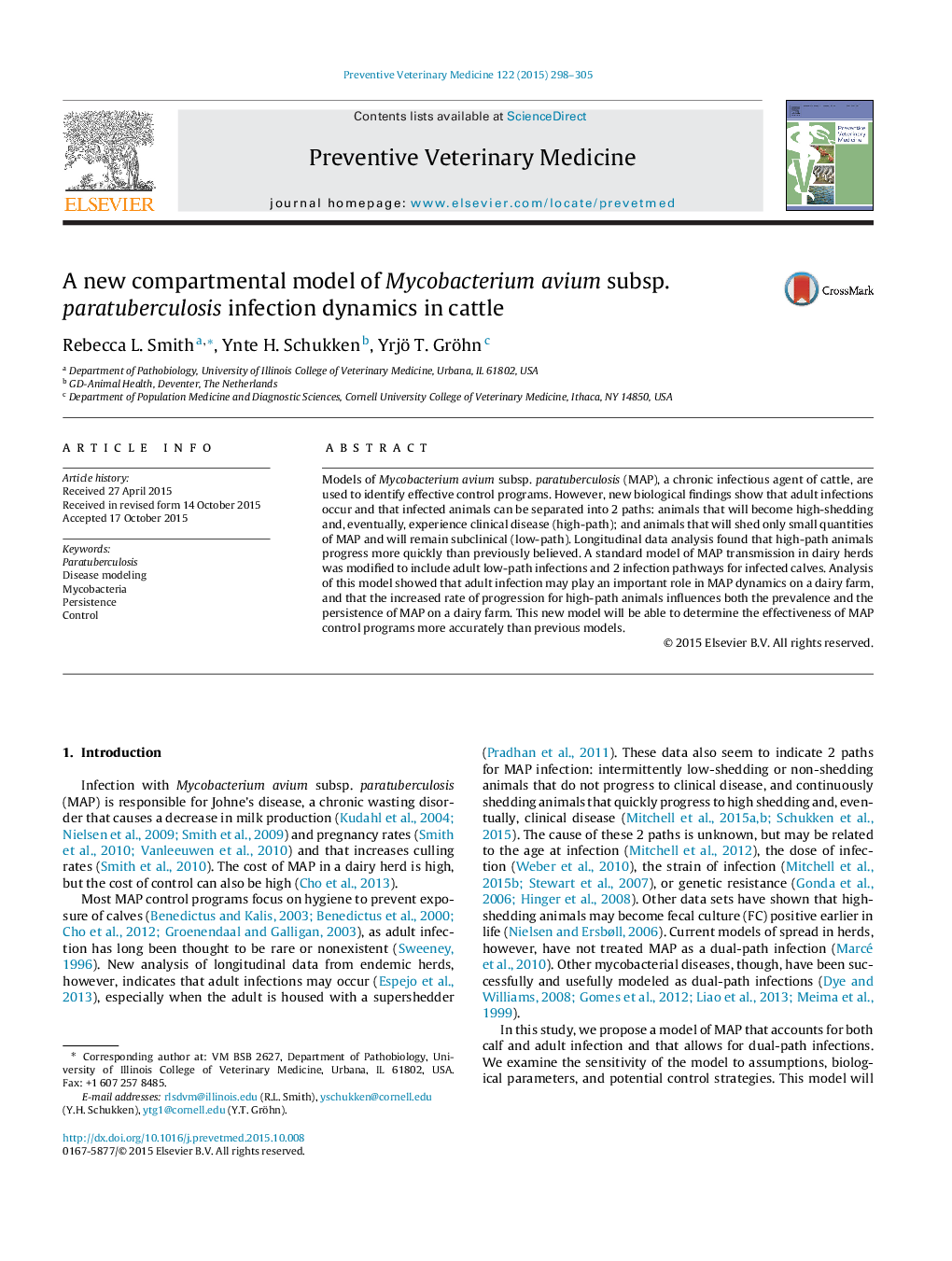| کد مقاله | کد نشریه | سال انتشار | مقاله انگلیسی | نسخه تمام متن |
|---|---|---|---|---|
| 5793241 | 1110001 | 2015 | 8 صفحه PDF | دانلود رایگان |

- Adult susceptibility and dual-path infections were added to a model of MAP.
- Infection in high-path animals progressed more quickly than previously believed.
- Adult susceptibility can decrease the likelihood of MAP elimination on a farm.
- Fast-progressing high-path animals increase MAP persistence on a farm.
- Elimination of MAP from a dairy farm using a test-and-cull program is unlikely.
Models of Mycobacterium avium subsp. paratuberculosis (MAP), a chronic infectious agent of cattle, are used to identify effective control programs. However, new biological findings show that adult infections occur and that infected animals can be separated into 2 paths: animals that will become high-shedding and, eventually, experience clinical disease (high-path); and animals that will shed only small quantities of MAP and will remain subclinical (low-path). Longitudinal data analysis found that high-path animals progress more quickly than previously believed. A standard model of MAP transmission in dairy herds was modified to include adult low-path infections and 2 infection pathways for infected calves. Analysis of this model showed that adult infection may play an important role in MAP dynamics on a dairy farm, and that the increased rate of progression for high-path animals influences both the prevalence and the persistence of MAP on a dairy farm. This new model will be able to determine the effectiveness of MAP control programs more accurately than previous models.
Journal: Preventive Veterinary Medicine - Volume 122, Issue 3, 1 December 2015, Pages 298-305